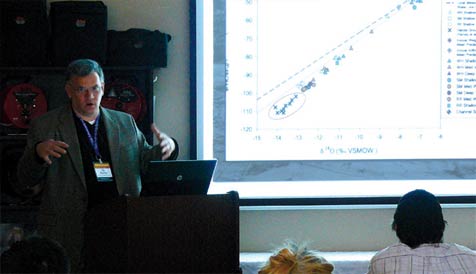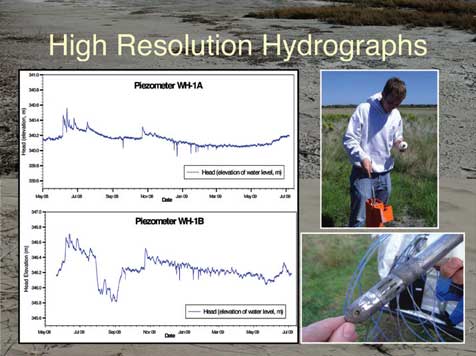
Day Two began with a very interesting presentation by Ed Harvey with the University of Nebraska-Lincoln. Ed presented ongoing research from two of Nebraska’s most unique groundwater dependent ecosystems – Eastern Saline Wetlands and Sandhills Fens. Due to the unique composition of the groundwater that feeds these two ecosystems, the species found in these environments are not native to these regions of Nebraska.
Eastern Saline Wetlands are sustained by highly saline water up-welling from deep formations. These wetlands support plant life more commonly found in coastal wetlands. Sandhills wetlands have very low total dissolved solid and nutrient loads. Induced by evapotranspiration in this very arid region, up-flowing groundwater sustains plant communities found more commonly in boreal regions of the northern United States and Canada. Rare and fragile plant and insect species rely on these “island ecosystems” for their survival, creating a unique relationship.

Monitoring Ecosystem Processes and Responses
Research clearly shows that responses to changes in hydrological and chemical conditions in these ecosystems occurs very quickly and, therefore, requires high resolution data in order to capture the smaller timescales at which these changes take place. By using Leveloggers at these sites, researchers have been able to capture the frequent data sets desired, over the long term. Continuous, automated monitoring of water levels, temperature and conductivity has allowed researchers to track the changes more easily.
